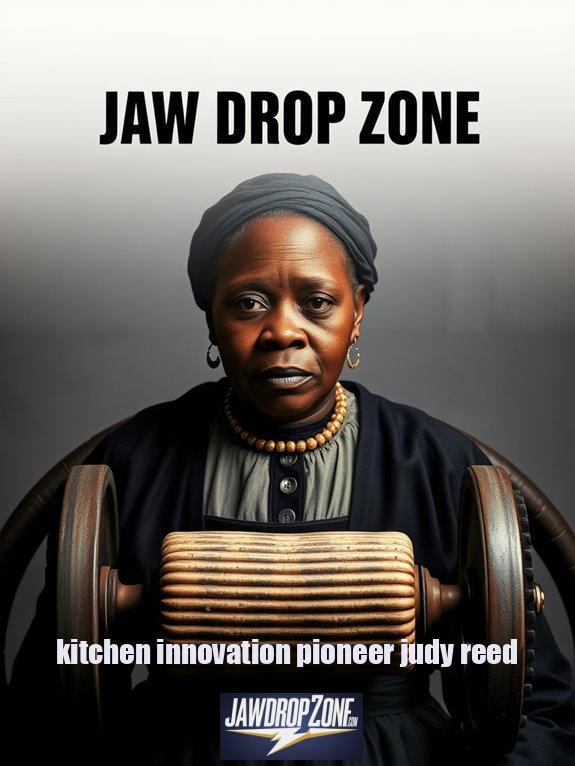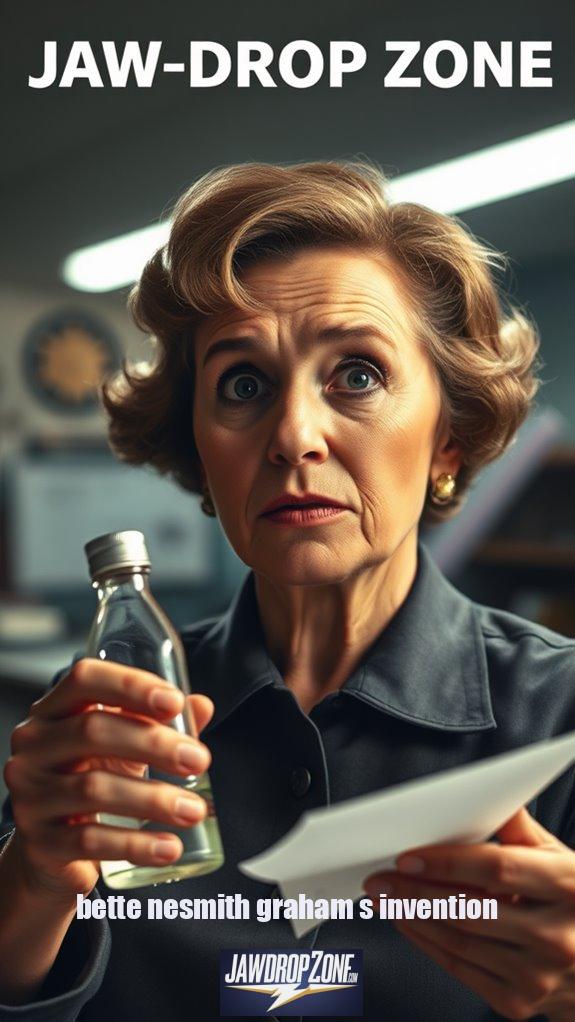Did you know that Judy Reed, an African American seamstress, snagged a U.S. patent for her ingenious Dough Kneader and Roller back in 1884? That's right! In a time overshadowed by discrimination, she tackled dough mixing woes and even fought dust contamination. Talk about baking with a twist! Her invention didn't just tackle kitchen struggles; it revealed the creativity and resilience of women inventors. Curious about how her story continues to inspire? There's so much more to uncover!
Quick Takeaways
- Judy Reed, born in 1826, became one of the first African American women to secure a U.S. patent with her invention.
- Her patented "Dough Kneader and Roller" improved dough mixing by using corrugated rollers to ensure even kneading and reduce contamination.
- Reed submitted her patent application in the 1880s, overcoming significant racial and gender barriers in a challenging societal context.
- The invention represented women's empowerment and showcased their contributions to kitchen innovation, highlighting the importance of female inventors.
- Judy Reed's story emphasizes the need to recognize and honor diverse figures in the history of innovation and resilience.
Judy Reed: A Pioneer in Kitchen Innovation

When you think about groundbreaking inventions, does your mind ever wander to the story of Judy Reed? If not, it should. Born in 1826 in Charlottesville, Virginia, Judy became one of the first African American women to snag a U.S. patent for her "Dough Kneader and Roller." Yeah, you read that right! This woman transformed an essential kitchen task into something revolutionary, all while maneuvering a world laden with racial and gender discrimination.
Imagine the 1880s—hard to picture, right? Yet here's Judy, a seamstress in Washington, D.C., applying for a patent at a time when many people thought women, especially Black women, should stick to sewing and baking. But she wasn't having any of that nonsense. With her clever design, which included corrugated rollers to knead dough evenly, she addressed a common problem: dust contamination. Judy's innovative approach helped to improve dough mixing by featuring intermeshed rollers that acted as kneaders. Moreover, her invention represented the impact of women inventors on addressing everyday challenges in the kitchen.
It took skill and innovation to think, "Hey! My dough should be protected from the grime of the world!"
What's mind-blowing is how Judy signed her patent with an 'X.' You might think that means she couldn't read or write, but let's unpack that. Many African Americans lacked access to education after slavery. Coming from a family of five children and being the widow of a gardener, Judy faced monumental challenges, yet she broke through.
Her invention, granted on September 23, 1884, didn't just improve kitchen mechanics; it was a declaration. It screamed, "Look at me! We matter!"
Why am I sharing Judy's story? Because figures like her deserve the spotlight, and it's the kind of history that makes us say, "Wow, we can take control of our narrative!"
Innovative Kitchen Appliance Invention

Innovative kitchen appliance inventions don't just pop up out of thin air; they emerge from a cocktail of necessity and creativity, reshaping how we cook and prepare our meals.
Take the Ninja 2-Basket Air Fryer—dual baskets for simultaneous dishes? Genius! Ever tried juggling that with one fryer?
The Ninja 2-Basket Air Fryer—two baskets for multitasking madness! Who needs one fryer when you can have double the deliciousness?
Or the ImVection IMV-4E Oven, flawlessly blending convection and impingement cooking. It's like having a personal chef with touchscreen control!
And I can't forget the True Ice machine, keeping things cool while being eco-friendly.
These marvels inspire me and fuel my passion here at Jaw Drop Zone.
Isn't innovation just deliciously thrilling?
References
- https://ipwatchdog.com/2021/02/16/signed-x-judy-reed-improved-dough-kneader-roller/id=129915/
- https://www.youtube.com/watch?v=TH-n7idjVm0
- https://kids.britannica.com/kids/article/Judy-Reed/633105
- https://blackwithnochaser.com/black-in-the-day-all-about-the-dough/
- https://patents.google.com/patent/US305474A/en
- https://www.ien.com/product-development/news/22887972/the-top-25-kitchen-innovations-in-2024
- https://en.wikipedia.org/wiki/Judy_W._Reed
- https://www.appliance-world.com/blog/appliance-invention-breakthroughs
- https://www.blackpast.org/african-american-history/reed-judy-w-c-1826/
- https://sharpmagazine.com/2022/03/03/the-best-smart-kitchen-tools/



